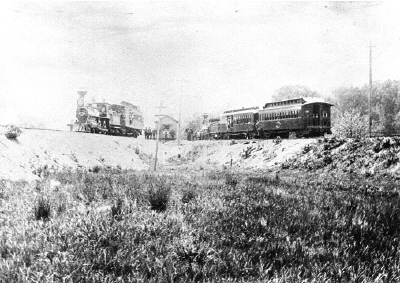|
|
COLUMBUS & HOCKING VALLEY RAILROAD |
|
|
C&HV - Introduction The Columbus and Hocking Valley Railroad had its inception as the Mineral Railroad, a company incorporated by Milbury Greene and others on April 14, 1864, to construct a railroad between Athens and Columbus, 76 miles. The incorporators spent the next three years raising the money necessary to build the line. The construction, which was done by Dodge, Case and Company, began on June 6, 1867, southward from Columbus. On June 26, 1867, the Franklin County Court of Common Pleas consented to the Mineral Railroad being renamed the Columbus and Hocking Valley Railroad. Rails reached Lancaster on September 16, 1868; Logan, May 11, 1869; Nelsonville, August 17, 1869, and Athens on July 25, 1870. The railroad's arrival in each of these towns involved an appropriate ceremony. To reach the heart of the coalfield, completion of the 13-mile Straitsville Branch came on January 2, 1871. Several other branches followed, all of which interconnected. These included the Monday Creek Branch between Nelsonville and Monday Creek Junction, 16.8 miles, in 1880; the Snow Fork Branch from Snow Fork Junction to Murray City, 10.6 miles, in 1882; the Brush Fork Branch out of Brush Fork Junction to New Pittsburgh, 12.3 miles, in 1878; the Sand Run Branch, 2.5 miles, in 1880 and the Lost Run Branch, 2.1 miles, in about the late 1880's. C&HV No. 17 in 1882 By 1881, the Columbus and Hocking Valley owned 40 locomotives. Thirty were typical 4-4-0's of the period—nine passenger engines with 60-inch drivers and 21 freight engines with 54-inch drivers. Another nine were 0-4-0 switchers with 50-inch drivers. The other locomotive, a freight 2-6-0, was somewhat of a maverick among the other engines. Of the 40 locomotives, Hinkley built 24 and the other 16 came from Rogers, but their numbers (consecutive from 1 to 40) did not directly represent a class or a wheel arrangement. In the early 1870's, Chicago and Northern Ohio markets clamored for Ohio coal. The cost of shipping Hocking Valley coal beyond Columbus on other railroads seemed almost prohibitive to the mine operators and to the closely knit Columbus men who owned most of the mines and controlled the Columbus and Hocking Valley. The time had come to build another railroad. Nelsonville Freight Station 1890 |



